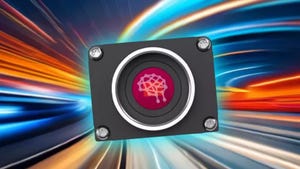Laser lowers heart pacer risk
November 20, 2000

Colorado Springs, CO -Each year, doctors implant heart pacemakers in some 500,000 patients worldwide. While this procedure saves lives, there is a risk: failure of the defibrillator leads connecting the pacemaker and heart. A photo-ablative catheter, recently developed by engineers at Spectranetics Corp., minimizes the threat of failed leads.
"An implanted heart pacer has from one to three wire leads," explains Paul Hollendorfer, laser systems engineer for Spectranetics. "After a period of time, these leads may fail and need replacement." The problem, he notes, is scar tissue.
CAD facilitates design |
"Because of scar tissue, lead removal can require a lot of force, resulting in torn arteries or other complications. Doctors, therefore, may choose to leave the faulty leads in place after installing new ones." This procedure, Hollendorfer states, creates new problems such as infection. Worse, the tips of the old leads can split, leaving sharp wire ends that may possibly puncture the heart sac. Even so, many doctors remain reluctant about removing the leads because they believe removing them is as dangerous as leaving them in place.
Use of the Spectranetics Laser Sheath (SLS) catheter solves this predicament. Its plastic tube contains a ring of optic fibers and a radio-opaque tip. The tip permits visualization of catheter position within the body by means of fluoroscopy. The optical fibers, oriented and bonded into the catheter tip in a proprietary arrangement, guide the excimer laser's cutting action.
"To operate," says Hollendorfer, "the physician threads the catheter over the wire he or she wishes to remove until the SLS hits resistant scar or other unwanted tissue. At that point, the doctor fires the laser and ablates, or dissolves, the scar tissue, and the SLS advances down the wire until it comes free."
The old lead removal procedure is reported to have had a 60-65% success rate, underscoring physicians' fears of lead removal. Since its introduction, the SLS has proved 94% successful.
"Our biggest hope is that doctors will now remove old pacer leads routinely, eliminating the risks of leaving them in place," Hollendorfer says. In 1999, the U.S. Food and Drug Administration (FDA) listed the SLS as one of 21 significant medical device breakthroughs.
About the Author(s)
You May Also Like





